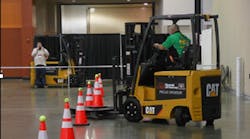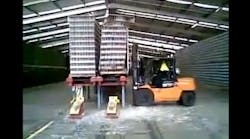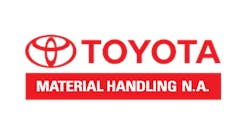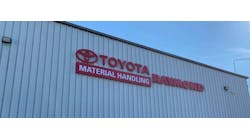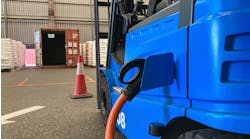Even with nearly 100 years of research and development behind it, making it safer, more efficient and more adaptable, a forklift is still one of industry’s most dangerous pieces of equipment.
Each year in the United States, nearly 100 workers are killed and another 20,000 are seriously injured in forklift-related incidents, while in the U.K. forklifts are responsible for up to 10 deaths and a further 400 serious injuries every year.
This means that every three days in the U.S., and every six weeks in the U.K. someone loses their life as a result of a forklift accident.
What Makes Forklifts So Deadly?
The biggest forklift safety hazard is the same feature that makes forklifts so popular, and that’s their ability to lift and carry almost any type of load, within its weight capabilities. But the problem doesn’t lie with the load; it’s the instability of the truck once the load is on board.
Once the load is in place the truck becomes unstable, with a varying center of gravity that, unless handled with exceptional care and by a fully trained operator, can cause the truck to tip.
Other factors that can contribute to an overturned truck include loads that are over the weight capacity for the truck, improper use of restraints to secure the load and a sudden change in speed or motion that causes the load to shift, knocking the truck off balance.
Of course, there are many other reasons for thousands of accidents every year, such as distracted driving and off-dock accidents. But nearly all forklift truck accidents, minor or deadly, could have been avoided if the driver had undergone professional training and upheld basic safety rules.
Training Requirements
Both OSHA (Occupational Safety and Health Administration) in the U.S. and the HSE (Heath and Safety Executive) in the U.K. recognize the need for proper training for all operators, and the responsibility for these types of forklift training courses always lies with the employer.
In the U.S. employers are expected to develop and implement a training program based on the general principles of safe truck operation and the general safety requirements of the OSHA standard. Trained operators must be able to demonstrate their ability and their employer must review each operator at least once every three years. They must also provide refresher training if an operator demonstrates any unsafe working practices.
In the U.K. the requirements are similar. Employers must arrange suitable training for anyone expected to operate or work around a forklift, and ensure regular monitoring and refresher training. The initial training should include:
- Basic training to give the trainee an understanding of all the skills and knowledge they need to safely operate the truck.
- Specific job training tailored to the particular needs of the business, safety procedures and the type work to be undertaken.
- Familiarization training which should be completed on the job and under supervision to familiarize the trainee with the truck, the layout of the site, etc.
Causes of Forklift Accidents
Tip-Overs and Overturned Trucks
|
OSHA Causes of fatality |
|
|
Tip Over |
25.3% |
|
Struck by truck |
18.8% |
|
Struck by falling load |
14.4% |
|
Elevated employee on truck |
12.2% |
|
Off dock |
7.0% |
|
Improper Maintenance |
6.1% |
|
Lost control of truck |
4.4% |
|
Other |
11.8% |
According to OSHA, 25.3% of forklift accidents resulting in a fatality involve an overturned forklift truck. A truck can be tipped over because it was travelling on a steep slope, or across a surface that was uneven or slippery, or it could bump into an unseen edge or curb. Being overloaded or unevenly loaded is a common cause of overturns, but so is speeding and taking corners too quickly, or using an unsuitable or improperly maintained truck, and carrying loads at a dangerous height.
This means that every year in the U.S., roughly 25 people are killed by a falling truck, that would have been safe from any risk had the proper safety procedures been followed. At every site using forklifts there should be speed limits in place, a proper assessment of the ground, maintenance procedures to ensure the truck is safe and guidelines on how to correctly load and transport materials.
If all of these precautions were taken and followed, overturns would be unlikely and 25 lives could be saved.
Over-Capacity, Unsafe or Uneven Loads
Carrying a load that is over the capacity for the truck is hugely dangerous, with 14.4% of people killed in a forklift accident being struck by a falling load. As we’ve already seen, an improperly loaded forklift can also overturn, resulting in serious injury or even death.Again, all of these accidents are avoidable. Forklifts will have a maximum capacity clearly displayed somewhere on the vehicle, and with the proper training, there’s no reason an operator would load a forklift unevenly. There’s also a requirement to secure any potentially dangerous loads using the proper restraints, to stop anything from falling off during transport.
Off-Dock Incidents
A further 7% of incidents are the result of off-dock accidents. This could mean that the forklift drives, or reverses, off the dock when loading, or drives too close to the edge of a ramp and slips off, or tackles a slope in the wrong direction or too quickly, resulting in the truck overturning on the ramp.But when properly assessed, all docks and ramps should have a barrier around the edge that would stop the truck from falling off, even if it gets too close. And with the right training, an operator could properly assess their route and take precautions to ensure the truck doesn’t become unstable on a slope.
Pedestrian Accidents
One of the most concerning statistics is how many pedestrians are killed after being hit by a forklift. The Bureau of Labor Statistics has reported that 16% of fatal transport accidents involve the death of a pedestrian and in the U.K. 2/3 of people who end up in hospital as a result of a forklift accident were pedestrians.
One of the main causes seems to be a lack of training and awareness on behalf of the pedestrians, who may not understand the movements of a forklift. Many accidents occur when someone walks too closely behind a truck without realizing that the driver may not be able to see them, and if the truck should turn, they risk being knocked down or crushed by the forks.Another major cause for injury is forklifts running over the feet of pedestrians. This may seem minor in relation to being struck or crushed by the truck, but the weight of a truck, combined with the weight of its load can deliver crippling, lifelong injuries. Pedestrians are also at risk from overturned trucks or falling loads landing on them.
In a case recently prosecuted by the HSE, a farm manager lost his life when he was hit by a forklift. The HSE fined the company over £200,000 and found that they were to blame for the man’s death by failing to implement effective measures that would have allowed both the forklifts and pedestrians to move around the site safely. They stated that this failure in the management of the site caused the death of the man involved.
The only way to ensure the safety of pedestrians is to train not just the operators, but also the people who work alongside the trucks. Many companies also employ working zones, so forklifts can only be operated in certain areas that pedestrians are restricted from accessing.
Lack of Training, Maintenance or General Safety
One of the most commonly cited reasons for, or reasons contributing to, a forklift accident is improper training. A quick look at the HSE’s newsfeed sees hundreds of forklift accidents – some resulting in the death or serious injury of a worker, and others describing the lucky and narrow escape of a worker – every year.
In nearly every case, whether the blame is apportioned wholly or partially to the employer, the HSE explains that the accident could have been avoided with either proper training, vehicle maintenance or the implementation of safer working practices.
In 2010, a particularly horrifying example was bought to the HSE’s attention when two men were severely injured and a third was killed when a telescopic forklift truck overturned and landed on a car. The operator had been carrying out routine maintenance checks, which were part of his daily job and accepted by the company as normal practice. Despite this, the truck overbalanced as it was unsuitably positioned on unstable ground. Had the company or the operator read the maintenance manual, this would have been avoided. The HSE stated:
"This was a horrific accident that was totally avoidable. Construction sites have inherent risks, and even rough-terrain lift trucks have strict operational limits that need to be observed. With competent operation and suitable maintenance, tragedies like this should not happen.”
So despite rigorous safety guidance, numerous prosecutions and hundreds of deaths, forklifts are still involved in many work related accidents in both the U.K. and the U.S., nearly all of which could have been avoided.
The only way to avoid deaths is with proper education. Employers must take responsibility for training their workers and upholding a culture of safety in every working environment.
Phil Binks wrote this on behalf of Health & Safety Training Ltd., providers of forklift safety training for businesses across the U.K.




